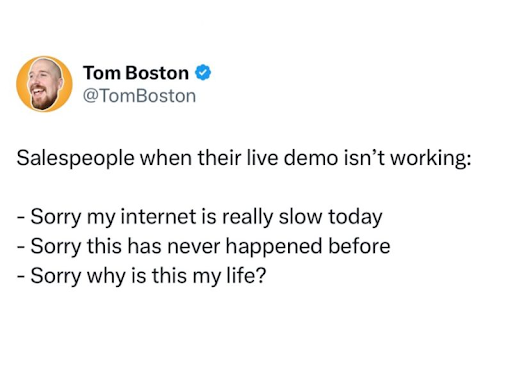October 14, 2024
Issue #676
Think of scaling not as a Herculean task but as an exciting road trip — one where every partnership you add is like picking up a new friend along the way, all contributing to a more enriching journey and an even stronger market position.
Wait… but first, what does scaling mean to you?
P.S. Have you completed the
2024 Future of Revenue survey? No? Take a few minutes while you get a sip of your coffee and help us shape the next gen of GTM.
PRINCIPLES
You need partners to scale
Everyone wants to scale in order to make their business profitable, but not everyone knows how to get there. In fact, not everyone has the same definition of scaling, which means there’s no perfect way to scale. What works for some may not work for others.
For some, scaling is when you approach the limits of growth.
For others, scaling is when revenue increases without a substantial increase in resources.
And for some others, scaling is when you handle a greater volume of work, sales, or operations.
But whatever your definition of scaling is (and according to Anita Campbell, CEO and Publisher of Small Business Trends, LLC), there are 6 elements you must consider if you want to scale your business:
- Planning and sales forecasting — broken down by number of new customers, orders, revenue you want to generate, tech, people, infrastructure, and the systems you have to handle the sales process.
- Funding — not much to say about this. Nothing in life is free.
Right systems and processes — establish a lead flow management process, marketing tracking systems, finance and customer success flows, and a partner relationships flow. - Staff — all your team players must be aligned and communicate properly.
- Technology — automation can help you run your business at a lower cost and more efficiently by minimizing manual work.
- Partners — they can help you with positioning, sharing intel, influence, and intros. Which can help your business to scale better, faster, and cheaper.
TACTICS
GTM as a moat in ELG
A couple of weeks ago, Dimitar Stanimiroff, Limited Partner at GTMFund (and Angel Investor), said on LinkedIn that combining a strong go-to-market (GTM) strategy with Ecosystem-Led Growth (ELG) creates a powerful, sustainable competitive advantage for startups.
Why? Dimitar explains,
This synergy offers a dual-layer moat. The proprietary data generated through ecosystem partnerships enhances the effectiveness and defensibility of the GTM strategy, making it difficult for competitors to replicate.
As the ecosystem scales with each new partnership, the insights gained compound, deepening the competitive edge while simultaneously reducing customer acquisition costs and increasing customer lifetime value.
This dynamic and scalable approach fosters sustainable growth, creating a flywheel effect that strengthens the market position over time.
Here’s an excerpt of his post, but we highly recommend you read his entire LinkedIn post.

When you combine GTM with Ecosystem-Led Growth (ELG), that moat becomes even more powerful. Here’s why:
GTM as a Moat in ELG
Proprietary data
In an ELG strategy, the data generated by your ecosystem is uniquely yours. Unlike third-party data, which is accessible to everyone and saturates outbound sales and marketing, your ELG data is truly proprietary. This exclusivity adds incredible strength to your GTM moat because competitors can't replicate the unique insights you gain from your ecosystem. While third-party data gets diluted as more companies use it, your ELG data remains powerful and exclusive.
Scalability of the moat
ELG not only provides proprietary data, but it also grows infinitely with each new partnership or integration. As your ecosystem expands, the data and insights compound, making your moat deeper and wider. With every partner you add, you’re not just scaling your product — you’re strengthening your position in the market through richer insights, making it harder for competitors to catch up.
Sustainable growth
ELG drives sustainable growth by continually enhancing your competitive advantage. As your ecosystem matures, network effects kick in. The more partners, users, and integrations you have, the more valuable your ecosystem becomes, creating a flywheel of growth. This makes your GTM strategy a dynamic, scalable moat that gets stronger over time.
MEME OF THE DAY
The pain is real
Who else has experienced this situation (whether as customer or sales rep)?

Thanks
Tom Boston
for the meme
STUFF YOU CAN'T MISS
- October 14-16: GTM2024 — TODAY
Join
Pavilion
at The Fairmont in Austin, TX to get ahead on your 2025 GTM strategy, learn about market trends, and boost your GTM strategy.
Get your ticket here.
- November 11-14: Web Summit
70,000 people will gather in Lisbon, Portugal for one of the biggest tech conferences in the world, featuring speakers from leading companies across nearly every technology vertical.
Book your ticket to join them here.
You're all caught up
See you tomorrow
If this email was forwarded to you,
sign up here to get the newsletter every week.




